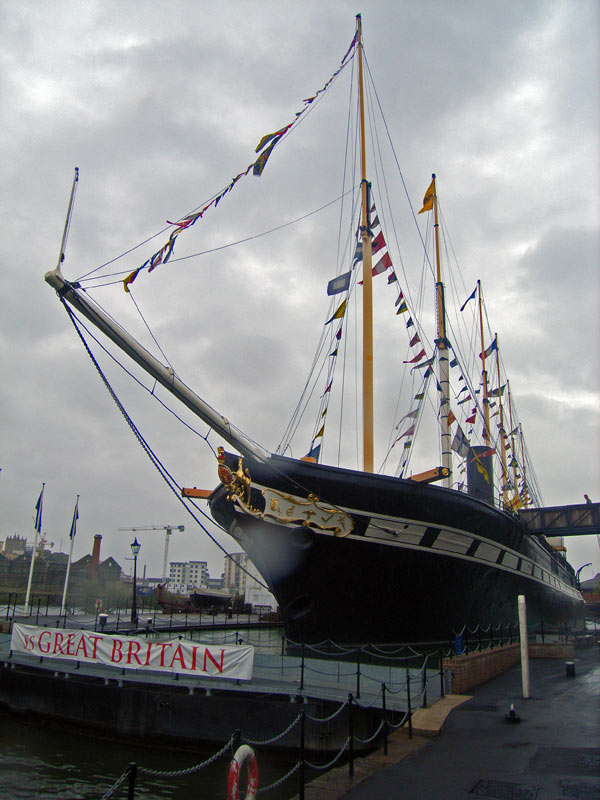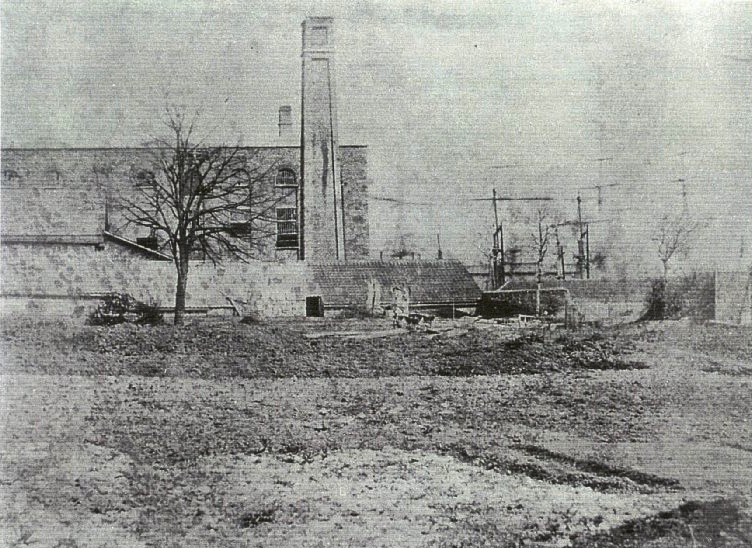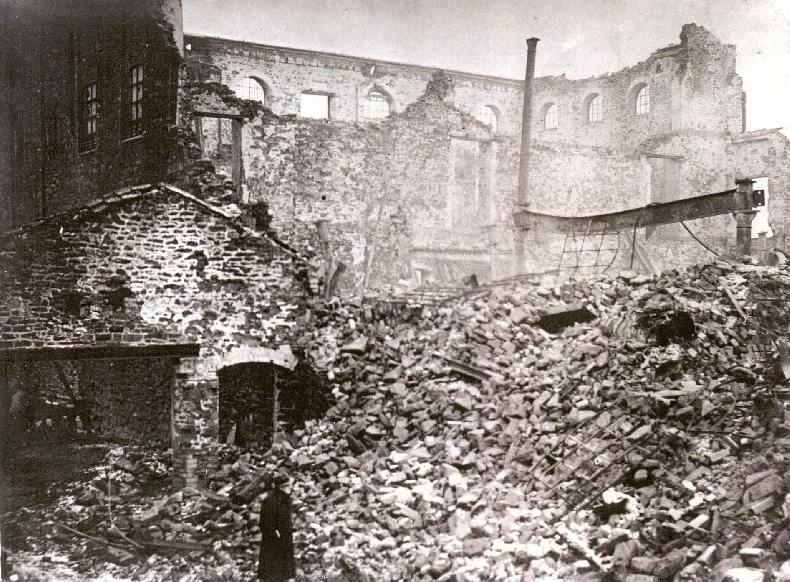 When she was launched in 1843 the ss Great Britain was the largest ship in the world and the first screw-propelled, ocean-going, wrought iron ship.
When she was launched in 1843 the ss Great Britain was the largest ship in the world and the first screw-propelled, ocean-going, wrought iron ship.
Designed by the famous engineer Isambard Kingdom Brunel, the ss Great Britain was built for the luxury passenger trade between Britain and America. She could carry 252 first and second class passengers and 130 crew. Her first career lasted for 94 years. In this time she sailed round the world many times; and in many roles.
Her career as a transatlantic liner was cut short by accident. After this she was converted to a clipper taking emigrants to Australia, before serving as a troop ship in both the Crimean War and the Indian Mutiny. She then became a cargo ship and, finally, a coal store in the Falkland Islands where she was scuttled in 1937.
In 1970 she was made seaworthy and towed back to Bristol where she was painstakingly conserved and transformed into the centre piece of a museum. Today the ss Great Britain is seen an icon of innovation in the heyday of the British Empire
The Great Western steam factory
The home of the ss Great Britain today is where she was built between 1839 and 1843; the Great Western Dockyard. Excavations ahead of the creation of the new Brunel Institute Conservation and Learning Centre provide an opportunity to discover about the world’s first purpose-built integrated iron steamship works.
The Great Western Steamship Company bought the site in 1839 and built the dry dock and the large Steamship Engine Works. The excavations are on the site of the Engine Works.
While the revolutionary iron hull of the ss Great Britain was taking shape in the dry dock, her enormous engine and transmission gear were made in the Engine Works. Nothing as large or powerful had been built before and the machinery in this building represented cutting edge technology.
Brunel had wanted to contract out the building of the engine, but the directors of the Great Western Steamship Company overruled him, stressing the advantages of fitting the boilers and machinery on the ship before floating her out of the dry dock. They intended to make money refitting and repairing other ships after the ss Great Britain was launched.
The Steam Factory was built on a monumental scale to accommodate the massive machinery required to construct the ship’s massive engine, propeller and transmission. It was an impressive building and in February 1840, the Mechanics Magazine referred to the “most excellent erecting shops fitted up for the engines with foundry, cranes and other conveniences”.
The archaeology of construction
Although we have information about some of the machinery installed in the Engine Works, we know little about how it was set up. Heavy plant was located on the ground floor, as was the smithy and foundry.
Pattern making and light turning operations could be carried out on the upper floors. The investigations will tell us more about what took place on the ground floor of the factory.

The Great Western Steamship Company was officially wound up in 1852 and the factory was sold to the Great Western Tannery. Tanning, the turning of animal hides into leather is a long and complex process which involves many stages. It involves soaking animal hides in pits that contain different liquids for several weeks. At the Great Western tannery, large vats were built on the ground floor of the Engine Works and a new, raised, floor was built around the top of the vats, tuning them into pits.

Later the site was used as a timber yard, a granary, and then a warehouse during the Second World War the building was badly damaged in an air raid by the Luftwaffe in 1941. It carried the scars from this until most of it was demolished down to the level of the floor of the tanner. Below this, though, the tannery pits survive and they rest on the floor of the Engine Works. A few of the original walls also survive and they will incorporated into the new Brunel Centre.
Link: Visit the official website of the ss Great Britain